
Related
Topics
Guests
- Myint ZawAsia 2015 Goldman Prize recipient. He is a Burmese journalist and activist who used art to organize protests against a dam on the Irrawaddy River that would have displaced 18,000 indigenous people and impacted millions more.
The Asia 2015 Goldman Prize has been awarded to Myint Zaw, a Burmese journalist and activist who used photographs and art to organize protests against a dam on the Irrawaddy River that would have displaced 18,000 indigenous people and impacted millions more.
Transcript
JUAN GONZÁLEZ: We want to turn now to Myint Zaw, who’s a Burmese journalist and activist who used art to organize protests against a dam on the Irrawaddy River that would have displaced 18,000 indigenous people and impacted millions more.
Welcome to Democracy Now!
MYINT ZAW: Thanks. Thanks for having me.
JUAN GONZÁLEZ: Tell us how you became involved in the issue of the dam.
MYINT ZAW: As a journalist, I cover pretty much on the environmental issue of our country, and including rivers. So when we heard about that proposed mega dam in the very important watershed area of our main river inside the country, we are very much compelled to act. But back then, we are living under the military regime, a quite oppressive military regime, so we move slowly, and we—but we try to come up with the ideas and the different approaches to raise awareness, to communicate the message across to the people.
AMY GOODMAN: I want to ask about some of the problems you faced while organizing opposition to the Myitsone Dam on the Irrawaddy River. This is social activist Kyaw Thu, who also participated in the protest.
KYAW THU: [translated] To intimidate and suppress us, the intelligence service would try to find out who was organizing these events. Then they’d place us under surveillance.
AMY GOODMAN: Can you tell us—can you tell us, Myint Zaw—
MYINT ZAW: Yes.
AMY GOODMAN: —who most benefits from the dam and who is most hurt by it, and where it is in Burma, what the military regime calls Myanmar?
MYINT ZAW: Yeah, the proposed mega dam, it would—the electricity generated from the dam, 90 percent would go to China, but just the less than 10 percent for our country. But even then, that 10 percent, in all these kind of agreement, the benefit will mainly go to the military, the official military regime, and not going to benefit to the people. But the negative impact is quite huge, not only for the people displaced by back of the dam, but also it’s going to flood the very crucial, globally important—the biodiversity, the biologically diverse area. And also, what we worry most is the downstream impacts of the proposed dam, because this is the main artery—the Irrawaddy River is the main artery of our country coming from the north to the south. It covers 60, 70 percent of the country. So, that’s negative impact. Because majority of our peoples are farmers and fishermen, so they need the healthy river. So the changes in the river flow are going to impact hugely to these majority rural population who reside along the Irrawaddy River. That’s most worrying for us. And also, this proposed dam are located in the northern Burma, or Myanmar, of which is the ethnic—the Kachin people, their traditional area and also their cultural heartland. So this is very much inappropriate in terms of the respect to the indigenous culture and their cultural heartland, also unacceptable for the people are the—for the downstream impacts and other negative environmental impact.
JUAN GONZÁLEZ: And, Myint Zaw, how were you able, as a journalist, especially given the enormous, overwhelming power of the military in your country, to get out the message and use art specifically to get out the message of the problems with the dam?
MYINT ZAW: Yeah, initially we wrote about the dams in other country, for the audience to get some of the comparison and some knowledge, but later on we thought that we should—we should write on or we should kind of express directly. And then we got an idea about the art gallery, because in our country, for the—we cannot—according to that military regime law, we cannot gather more than five people for any sort of the activities, for the social activities or political activities, but they allow to have the art gallery. So, we thought that this is a good place for us to gather people from different—across the community, like artists and media and civil society leaders. And also, they somehow relaxed to publish the gallery guidebook. But we changed that gallery guidebook in form of the publication that can raise awareness, that can communicate some basic sort of facts and figures and concept. And yeah, so this way we are working under the restriction and pushing bit—a little bit by bit that limit of censorship and expanding the space available to us, which is—back then, is the art exhibit is one place.
AMY GOODMAN: Well, Myint Zaw, we want to thank you for being with us, Asia 2015 Goldman Prize recipient, also a Burmese journalist and activist who used art to organize protests against this mega dam on the Irrawaddy River that would have displaced [18,000] indigenous people and impacted millions more. And their struggle continues in Burma. This is Democracy Now! We’ll continue our Earth Day special in a moment.

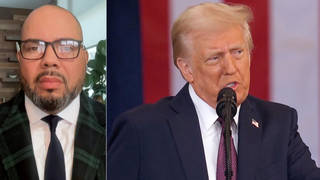
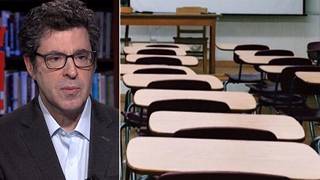
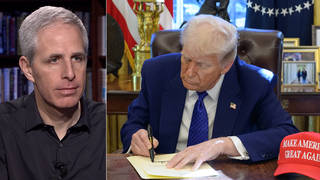
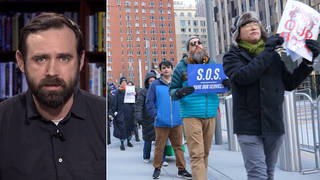

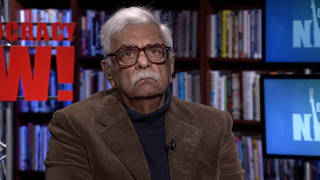
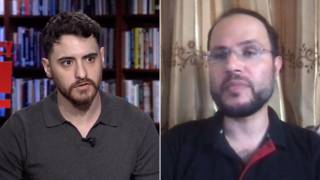
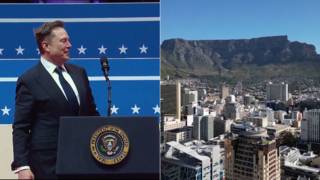


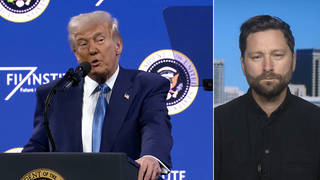
Media Options